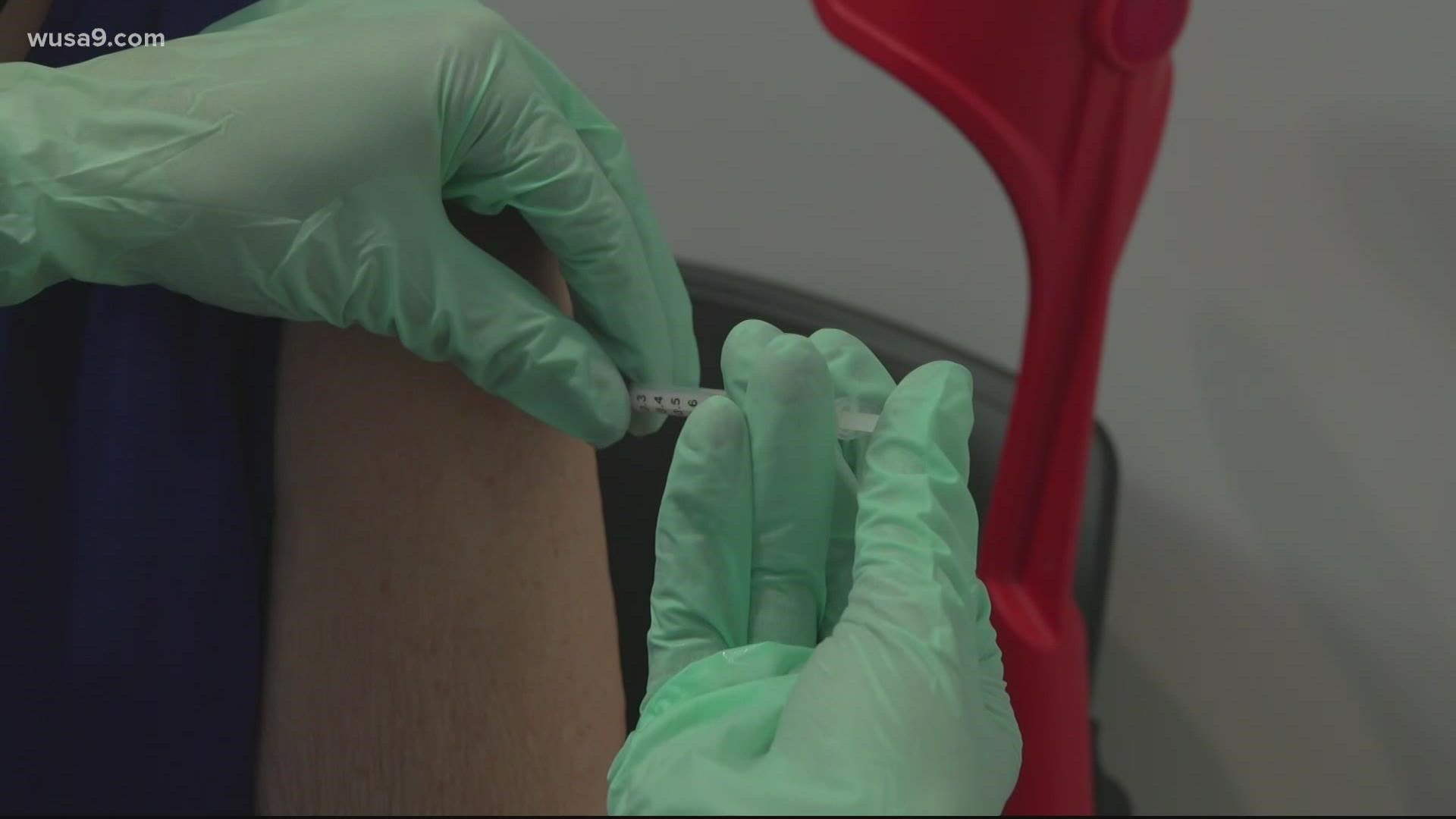GAITHERSBURG, Md. — (Editor's Note: The video above is from April 8, 2022)
A Maryland company is hoping that its COVID-19 shot will be the fourth one to make the market as soon as it's approved, and on Tuesday, advisers to the Food and Drug Administration backed the more traditional type of shot.
The Gaithersburg-based Novavax product is based on non- mRNA vaccine technology, and an approved shot would provide an option for people who are vaccine-hesitant because of the newer technology or for those who are allergic to other shots.
After nearly two years, Novavax filed for emergency use authorization with the FDA in January. Novavax has said the overall efficacy of its vaccine candidate is 90.4%.
Next, the FDA must decide whether to authorize the protein vaccine, and according to the Associated Press, Novavax shots are already available in Australia, Canada, parts of Europe and multiple other countries, either for initial vaccinations or as mix-and-match boosters. But U.S. clearance is a key hurdle for the Maryland-based company.
"The more vaccines, the better, and particularly vaccines that have this high level of efficacy," said Dr. William Moss, the executive director of the International Vaccine Access Center, said. "90%, that's really fantastic. That puts it in the top group of vaccines in terms of the protective efficacy. And so I see it having a big role globally."
Efficacy is the measurement of how well a vaccine prevents disease. The company's trial measured specific effectiveness against a number of SARS-CoV-2 variants; of the variants considered of "concern" or of "interest," as defined by the CDC, efficacy was 93.2%.
All cases of COVID-19 in trial vaccine recipients were mild, according to Novavax, and there were 10 moderate and four severe COVID-19 cases in the placebo group. Novavax says this means its vaccine touts 100% efficacy against moderate and severe disease.
According to the Verify team, there are two ways to get a vaccine greenlit by the FDA: with an Emergency Use Authorization (EUA) or by applying for a license through a Biologics License Application (BLA).
“The only difference really between the emergency use and the licensure is that volunteers are observed for a longer period of time to see the duration of protection, and if there might be rare adverse events that occurred down the road," said Dr. William Schaffner, a professor of infectious diseases at Vanderbilt University Medical Center and an affiliate of the CDC's Advisory Committee on Immunization Practices.
In layman's terms, a professor of epidemiology at the University of Michigan School of Public Health said that the follow-up period after complete vaccination is typically longer when considering full licensure.
"After the clinical trials are finished, the difference between the Emergency Use Authorization and full licensure, for the public's information or knowledge, is basically the duration of follow-up or safety, not efficacy," Dr. Arnold Monto said. "Efficacy requirements are the same."
EUAs only come into play if the secretary of Health and Human Services deems them necessary, and they're generally temporary, as opposed to licensure. For the EUA, it's an average of two months, but for a license, six months are required, Dr. Monto explained.
A final FDA decision isn’t expected immediately, as the agency finishes combing through the data.
Nor is it clear how widely a Novavax vaccine would be used, at least right away. Nearly 83% of those in the U.S. over the age of five are currently vaccinated, according to the Centers for Disease Control and Prevention.
The FDA advisory panel voted that the benefits of two primary Novavax doses outweigh its risks — but they had a lot of questions about the shots’ role at this point in the pandemic.

